Spring is definitely here, there is no going back. The oaks, hickories, red maples, and sassafras are unfurling their leaves, March’s dull and dreary landscape is behind us. The month of May promises to delight all of our five senses, especially those that deal with vision, scents, and hearing. Helicopters and unmuffled motor vehicles be damned, we will not let them destroy our vernal pleasures.
Outdoors
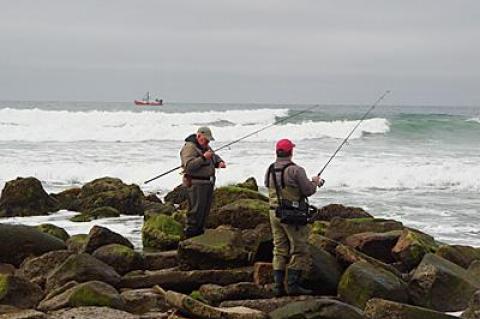 Rats at the Elbow
Rats at the ElbowLike the swallows to Capistrano (although I’ve read development has interrupted their instinctual return of late), Steve (The Perv) Kramer rolled into the Ditch Plain parking lot a few days ago from his winter haunts in Florida with a neatly trimmed beard. He is called Perv for no reason darker than his penchant for the odd, ribald observation. This does not make him a bad person.
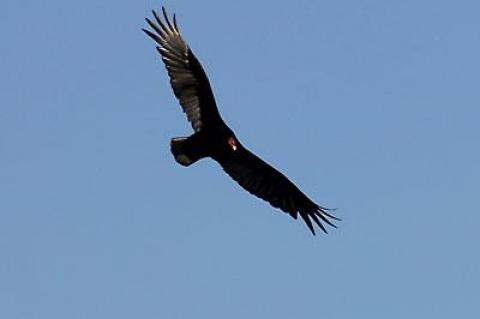 Nature Notes: The Vultures Are Circling
Nature Notes: The Vultures Are CirclingOn April 22, I drove down to Arlington, Va., a suburb of Washington, D.C., with my daughter, Angela, who was visiting me from California. It was a bright sunny day with nary a cloud and not much of a wind. From New Jersey through Delaware through Maryland to Virginia, the sky over the highways 60 to 100 feet above the pavement was filled with sailing turkey vultures. We must have seen more than 25, mostly singles, sometimes in pairs.
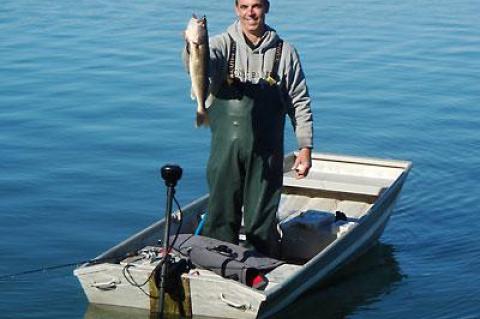 Tourney Skips the Gibbets
Tourney Skips the GibbetsTime will tell, but it looks like the era of blood-and-guts shark tournaments could be coming to an end. In late July, the Montauk Marine Basin will host a tag-and-release tournament that promises to engage the public long after the fishing stops.
The recreational shark fishery pioneered by Capt. Frank Mundus starting in the late 1950s exploded after the release of the movie “Jaws” in 1975. Shark tournaments proliferated along the East Coast, many of them in cooperation with the National Marine Fisheries Service.
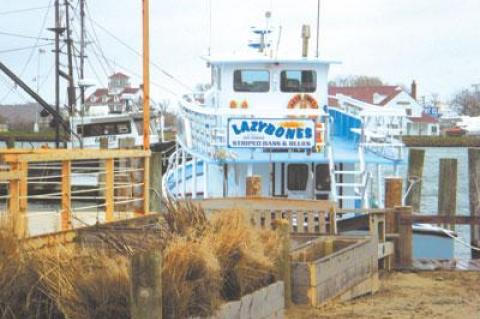 A Torturous Waiting Game
A Torturous Waiting GameReady, get set. . . . It’s like surfers waiting for a forecast swell to arrive, or the first crack of the bat for those yearning to return to Mudville. Fishermen are with child for the arrival of fish, as is the case each spring, but this season’s cold temperatures seem to be drawing it, torturously, out.
It was a bright, sunshine-filled Sunday afternoon when I pulled into the parking lot of Morton Wildlife Refuge in Noyac with my daughter, Angela, from San Francisco. The parking lot was jammed packed with vehicles. I found the only open spot — half in the woods, half out. With my camera and bag of black sunflower seeds at the ready, Angela and I proceeded into the reserve and followed the east trail, the one that takes you to the pond, the large tulip trees, and the state-endangered swamp cottonwoods.
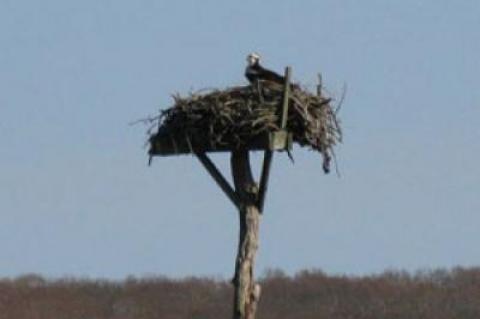 Nature Notes: Fish Hawks Endure
Nature Notes: Fish Hawks EndureAs of Monday, the red flowers of the swamp maples and yellow flowers of the spice bush are out, the wood anemones are about to bloom, and the smooth shads will follow shortly. It was a record cold March and April hasn’t been all that warm, but the native plants are beginning to show their colors.
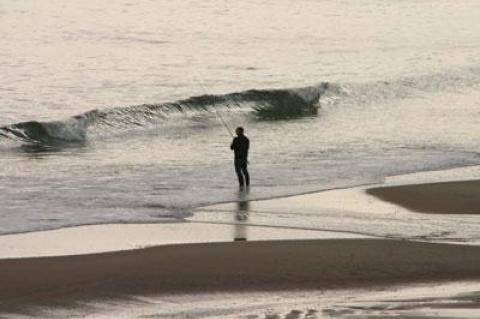 On the Water: The Bass Shootout Cometh
On the Water: The Bass Shootout ComethThe Montauk SurfMasters spring shootout tournament will begin on May 10. The first of Montauk’s annual fishing tournaments targets striped bass.
The entry fee is $110, all but $10 of which will go into the winner’s pot. The ten bucks is for lunch on awards day, June 29. The tournament has no divisions. Waders, wetsuiters, adult men and women compete against one another. An extra prize of $100 will be awarded for the first legal-size bass (28 inches long or longer) that’s weighed in.
People have been asking me about the completely browned-off white pines that resulted from the passing of superstorm Sandy at the end of last October.
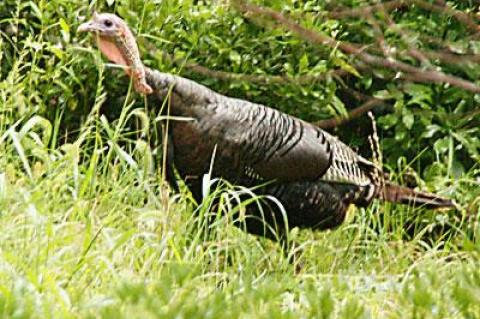 ON THE WATER: Tom Turkeys on My Trail on Flamingo
ON THE WATER: Tom Turkeys on My Trail on FlamingoSo, there I was driving down the hill on Flamingo Avenue toward the Montauk Firehouse early in the morning last week. Up ahead on the other side of the road was a jogger at the start of her climb. Whoa! What’s that behind her?
The Sportsmen’s Expo that is coming to the Amagansett Firehouse on April 20 will pretty much cover the waterfront when it comes to outdoor pursuits.
Terry O’Riordan, one of the organizers, said during a conversation this week that “we’ve got 30 to 40 exhibitors, about 10 more than we had at our first expo last year.”
There was a time in early spring, not all that long ago, when baymen set fykes on the bottom of Lake Montauk to trap the winter flounder as they rose from their muddy hibernation. There were enough flounder, in fact, for hook-and-line flounder anglers to get their nose out of joint over the presence of fykes. No more.
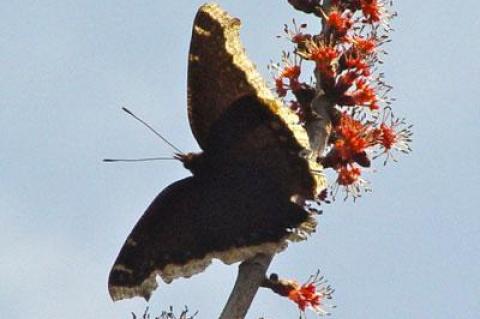 Nature Notes: Mourning Cloak Is Risen
Nature Notes: Mourning Cloak Is RisenWell, we finally had a spate of spring-like weather. On Saturday, a phoebe was calling around my house, joining the two-week siege of grackle, redwing blackbird, cardinal, Carolina wren, and tufted titmouse calling and singing. Phoebes show up when the insects begin popping out, and they started popping out over the weekend like mad.
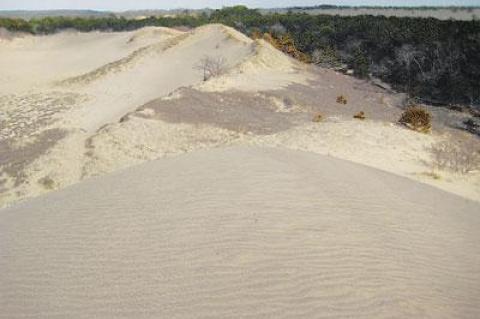 Nature Notes: Speed Walker in the Dunes
Nature Notes: Speed Walker in the DunesIf only Robert Moses, New York’s supreme 20th-century planner and doer, could revisit one of his first parkland acquisitions, Hither Hills State Park, and take a look as the gem of that park system, the Walking Dunes, he would feel very confident that his decision was well made.
Keeping a weather eye can be a challenge in these parts, especially as the seasons change. Anglers who have begun the process of getting rods, reels, boats, and trailers out of mothballs might also think about getting back in touch with the weather gods.
 A Malodorous Harbinger
A Malodorous HarbingerSkunk cabbage, Symplocarpus foetidus, is a plant of the Northern Hemisphere and a species that occurs throughout most of North America except for in the South and West. A flowering plant in the Jack-in-the-pulpit family, it is one of the first plants to flower each year and thus is a true harbinger of spring. The second half of its scientific name refers to its fetid smell, not unlike the effluvia emitted by a defensive skunk or the scent a red fox uses to mark its territory.
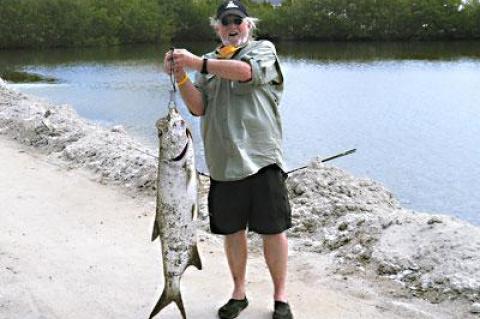 Fluke Hang in the Balance
Fluke Hang in the BalanceThe Ides of March, the days on and around March 15, were the start of the new year on the ancient Roman calendar. It was considered a propitious time full of promise unless you happened to be Julius Caesar, or the old men back in ancient Greece — long before Medicare — who were first dressed in animal skins, then beaten, and finally driven from town to celebrate the expulsion of the old year.
Who was it that said you can make naturalist into a scientist, but it’s almost impossible to teach a scientist to become a naturalist?
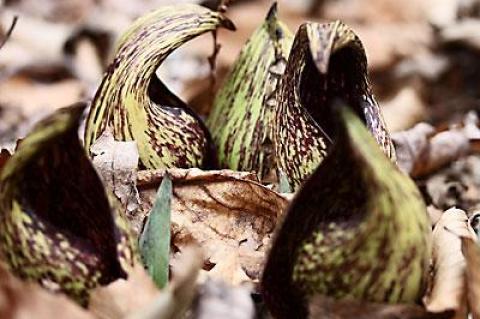 Nature Notes: Here Comes Spring
Nature Notes: Here Comes SpringOne more storm and then spring’s a-poppin’. In Noyac on Friday daffodils and daylilies began to sprout. Two weeks ago skunk cabbages were in bloom in Morton Wildlife Refuge in Noyac and at Big Reed Pond in Montauk. As of last Friday, deer ticks, both the blackish males and reddish-backed females, were crawling onto shoes, socks, and trousers in the shrub lands in Montauk east of the lake.
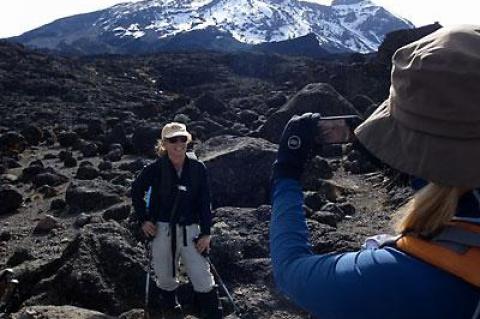 Kilimanjaro Celebration Was an Arduous One
Kilimanjaro Celebration Was an Arduous OneKarin Padden, who lives on one of Montauk’s high hills, said during a recent conversation that she had decided to climb Mount Kilimanjaro, “the world’s tallest free-standing mountain,” as a way of celebrating her 50th birthday.
It was also her way of saying that she, who has experienced much grief in the past several years, including the death of her husband, Robert M. Padden on Nov. 10, 2010, continues to love life and is not one to shrink from challenges.
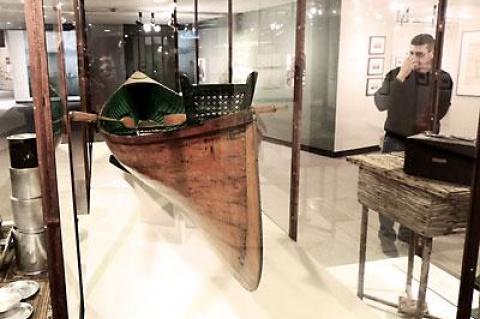 Nature Notes: To Albany and Back
Nature Notes: To Albany and BackLast Thursday, Karen Blumer, Vicki Bustamante, and I went north to Albany. After leaving Long Island it was bedrock all the way north along the Hudson River. The advance of the last ice sheet of the Wisconsin glaciation purportedly carved out the river basin that is over a mile wide in some places and stretches a good 200 miles. It is oriented north to south, so it makes sense that a quarter-mile-high glacier coming from Canada would be capable of making such a deep gouge and simultaneously creating the Palisades along the west side.
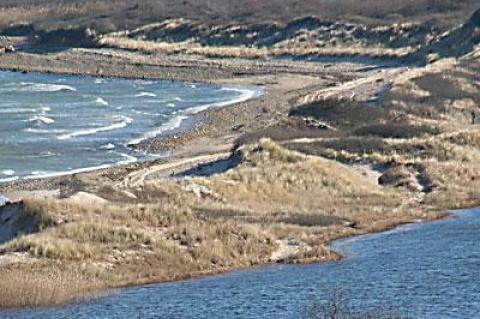 Nature Notes: Montauk Endures
Nature Notes: Montauk EnduresYou hardly hear anyone call it Lake Munchogue these days. The Hagstrom Suffolk County Atlas still has it down by its Native-American name, while including Oyster Pond in parentheses below. Many of the other water bodies on the South Fork retained names derived from the local dialects of the Algonkian language since settlement. There are Shinnecock, Noyac, and Mecox Bays as well as Lake Agawam, Poxabogue, Wickatuck, and Sagaponack Ponds and Sebonac Creek in Southampton Town. While in East Hampton there are Accabonac and Napeague Harbors and Napeague Bay.
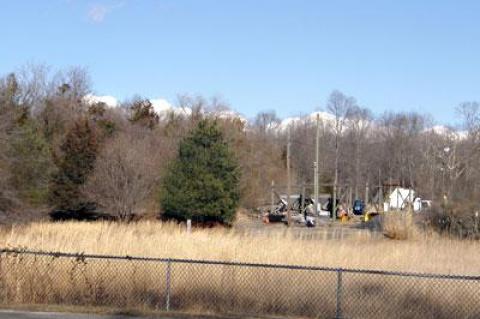 Nature Notes: Seeds of Change
Nature Notes: Seeds of ChangeMonday morning, the yard covered with a thick blanket of snow, but hints of global warming — six male robins and some starlings visited the privet and sniped the dark berries one by one. They were at it yesterday as well. The berries looked black, but when digested and defecated, they left deep purple stains in the snow. Privet berries must be emergency rations for berry-eating robins, which never feed on seed or suet.
 Nature Notes: If a Woodchuck Could Chuck
Nature Notes: If a Woodchuck Could ChuckPunxsutawney Phil in Pennsylvania and Staten Island Chuck didn’t see their shadows on Saturday while Malverne Mel and Holtsville Hal did. It’s hard to believe that Pennsylvanians and Staten Islanders will be blessed with an early spring, while we Long Islanders will suffer prolonged winter, as we are relatively close to those areas and prevailing climate conditions stretch for hundreds of miles. What weather conditions eastern Pennsylvania has, we should also enjoy.
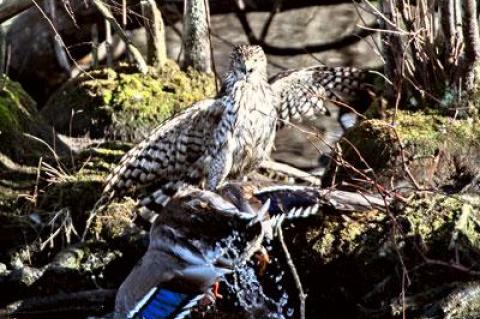 Nature Notes: Carolina in the Morning
Nature Notes: Carolina in the MorningIt was gently snowing with big and little flakes on Monday morning when I went into the living room with my coffee to see if Noyac Bay had frozen yet. I was greeted by a flutter as something whizzed past my head and ended up on top of one of the Venetian blinds where it twitched nervously. The twitching little body, white stripe over the eye, and cocked tail gave it away immediately — a Carolina wren. Poor thing, it didn’t like the freezing cold and falling snow any more than I did.
 Nature Notes: Center Without a Home
Nature Notes: Center Without a HomeAcross the face of the world thousands of new organizations are spawned every day. Just take a look on the Internet and you will find millions of groups and associations that have an e-mail address ending in .org. It isn’t hard to start an organization, but it is hard to keep one going.
The two recent gang-rape incidents in India and the beheading of a Sri Lankan woman in Saudi Arabia, a so-called friendly nation, has caused me to wonder if we are making any progress at all. We are supposed to be culturally evolving and perhaps some of us are, but these atavistic acts by men makes me wonder.
Calcium. An element that we and billions and billions of organisms cannot live without. All vertebrates, with their vertebral columns and many other bones and teeth need calcium. All shelled mollusks and barnacles require calcium. You don’t find many barnacles, if any, in freshwater environments. Calcium is found in a host of other animals where it serves a variety of vital functions. Plants don’t metabolize calcium per se, but the calcium in lime or limestone neutralizes acid soils, which inhibits the growth of many plant species, including grasses, forbs, shrubs, and trees.
The last of the Long Island Christmas Bird Counts — the Orient Count — took place on Saturday. The count compiler over the last 20 years has been Mary Laura Lamont of Northville in Riverhead Town, and as of Sunday night all of the results had not been turned in to her. Nonetheless, after talking with Mary Laura, it is obvious that this was a very good count, especially for the North Fork territories and Shelter Island. Our part of the count was Cedar Point County Park on the east to Morton Wildlife Refuge on the west.
 Nature Notes: Lessons From the Deer
Nature Notes: Lessons From the DeerThere’s a war on locally. I don’t mean the war on D.W.I.s or the war on drugs, I mean the war on the white-tailed deer, Odocoileus virginiana. It was here on Long Island before we were, even before the first Amerindians, and is the only member of the antlered-mammal family native to Long Island, we never had moose, elk, or caribou. Apparently, being too native is similar to being too alien. I once heard a well-known gourmet writer on North Haven call them “rats.”
